

Accessible Web Design for B2B: 10 Powerful Techniques for Superior Results
Make your B2B website shine with accessible web design. Learn the crucial elements for creating a compliant and user-friendly site.
Creating accessible web design for B2B websites is more than a trend—it’s a necessity in today’s digital landscape. With increasing regulatory demands and a growing awareness of inclusivity, ensuring your site is accessible can significantly enhance user experience and expand your reach. This guide delves into the core principles of accessible design, offering practical insights to help B2B businesses not only comply with standards but also stand out in a competitive market.
Our comprehensive approach draws from industry-leading resources and expert analysis to provide actionable strategies. Whether you’re looking to improve navigation, ensure compliance, or optimize interactive elements, this guide will equip you with the knowledge to transform your B2B website into a model of accessibility and usability.
What is Accessible Web Design for B2B Websites?
Accessible web design for B2B websites is the practice of creating digital platforms that are usable by everyone, including individuals with disabilities. This approach ensures that all users, regardless of their physical or cognitive abilities, can navigate, interact with, and benefit from your website. In the context of B2B, where functionality and ease of access are critical, integrating accessible web design principles can significantly enhance user experience and broaden your audience reach.
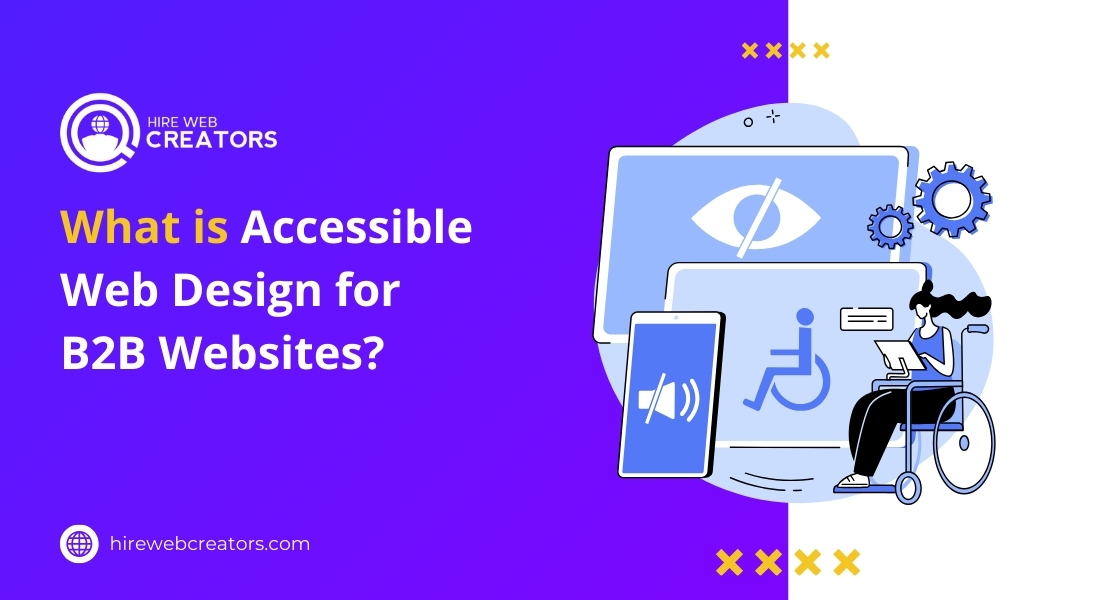
To understand accessible web design for B2B websites, it is essential to recognize its core components. Accessibility involves designing websites that comply with established guidelines and standards, such as the Web Content Accessibility Guidelines (WCAG). These guidelines are structured around four main principles: perceivable, operable, understandable, and robust. Each principle addresses different aspects of accessibility, from ensuring content is easily viewable by people with visual impairments to making interactive elements navigable by those using assistive technologies.
The benefits of incorporating accessible web design for B2B websites extend beyond compliance. Implementing these practices can improve overall site usability, leading to better user engagement and satisfaction. For instance, ensuring that your site’s color contrast meets accessibility standards can make it easier for users with visual impairments to read content. Similarly, providing alternative text for images ensures that users who rely on screen readers can understand the content. By prioritizing accessible web design, B2B companies not only meet legal and ethical standards but also enhance their site’s performance and reach.
Incorporating accessible web design for B2B websites involves a strategic approach to content creation, design, and development. It requires ongoing assessment and adjustments to ensure that all users can access and interact with your site effectively. By embracing these principles, businesses can create inclusive digital experiences that resonate with a diverse audience and comply with relevant accessibility standards.
Why is Accessibility Important for B2B Websites?
Accessibility is crucial for B2B websites because it ensures that all potential clients and partners, including those with disabilities, can fully engage with your digital content. By prioritizing accessible web design for B2B websites, companies can reach a broader audience and enhance their market competitiveness. Accessible design not only complies with legal requirements but also demonstrates a commitment to inclusivity, which can significantly impact your company’s reputation and client satisfaction.
In the realm of B2B, where professional interactions and transactions are central, accessible web design can enhance user experience and streamline business processes. For instance, ensuring that your website’s navigation is accessible can make it easier for all users, including those with disabilities, to find relevant information and services. This can lead to more efficient business interactions and a stronger online presence, which is crucial for maintaining a competitive edge in the B2B sector.
The importance of accessibility for B2B websites also extends to legal compliance. Many regions have specific laws and regulations that mandate accessibility standards for websites, and failure to comply can result in legal consequences and potential damage to your company’s reputation. By adopting accessible web design principles, B2B businesses can avoid these risks while creating a more inclusive and effective online environment for all users.
What Are the Key Principles of Accessible Web Design?
Key principles of accessible web design for B2B websites ensure that all users can access and interact with digital content regardless of their abilities. The Web Content Accessibility Guidelines (WCAG) outline these principles, focusing on making content perceivable, operable, understandable, and robust. Each principle plays a vital role in creating an inclusive online environment, which is essential for B2B sites where ease of access directly impacts user engagement and satisfaction.
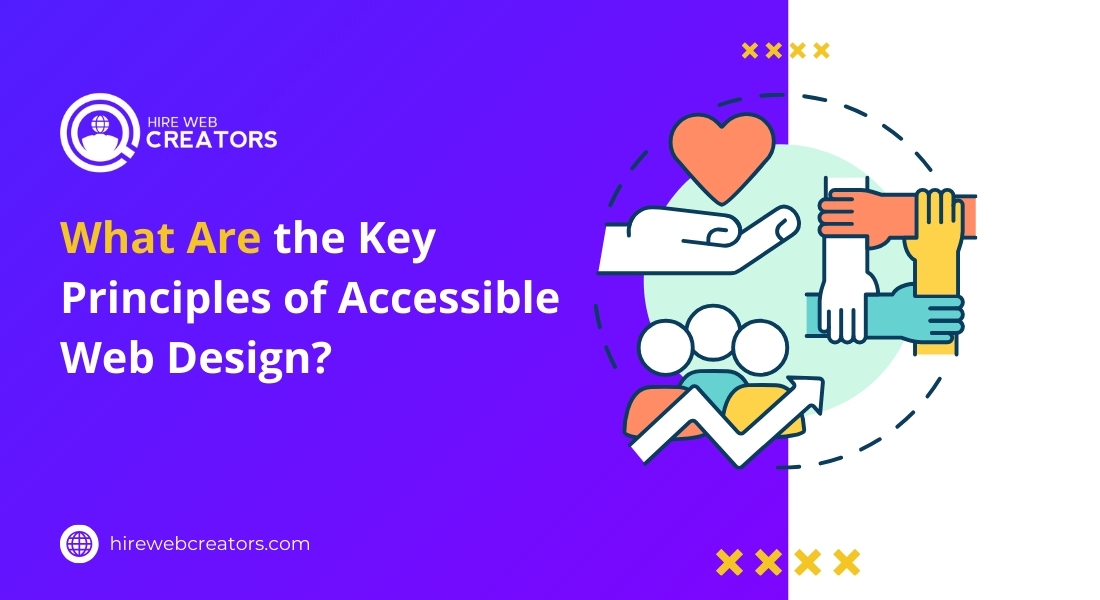
Perceivable design elements involve ensuring that all content is available to users in various formats. This includes providing text alternatives for images and ensuring that content is readable and understandable for users with visual or auditory impairments. The operable design focuses on making all interactive elements, such as buttons and forms, easily navigable by users who rely on keyboard navigation or assistive technologies. Understanding design ensures that content is clear and logically organized, making it easier for users to comprehend and interact with. Robust design emphasizes compatibility with current and future technologies, ensuring that content remains accessible across different devices and platforms.
Implementing these principles in accessible web design for B2B websites can significantly enhance user experience. For example, by ensuring that your site’s interactive elements are operable with keyboard navigation, you make it easier for users with motor disabilities to engage with your content. Similarly, providing clear and concise text alternatives for images ensures that users who rely on screen readers can fully understand the content. Adhering to these principles not only meets accessibility standards but also improves the overall usability of your site, which is crucial for maintaining effective business operations and client relations.
How Does Accessibility Impact User Experience in B2B?
Accessibility has a profound impact on user experience for B2B websites, directly influencing how users interact with and perceive your digital content. Accessible web design for B2B websites ensures that all users, including those with disabilities, can easily navigate and utilize the site’s features. This inclusivity enhances the overall user experience by making the site more user-friendly and reducing barriers to access.
Improving accessibility on B2B websites often leads to a more intuitive and efficient user experience. Features such as keyboard navigability, screen reader compatibility, and clear visual contrast can make it easier for users to find information and complete tasks. For instance, accessible forms that include properly labeled fields and instructions can streamline the process for all users, reducing frustration and improving efficiency. This is especially important in B2B contexts where complex transactions and interactions are common.
Moreover, prioritizing accessible web design for B2B websites can lead to increased user satisfaction and loyalty. Users who encounter accessible and well-designed websites are more likely to have a positive experience, which can enhance their perception of your company’s professionalism and commitment to inclusivity. By ensuring that your website is accessible, you create a more inclusive environment that caters to the needs of all users, ultimately leading to better engagement and stronger business relationships.
What Are Common Accessibility Issues Found in B2B Websites?
Common accessibility issues in B2B websites can hinder usability and exclude users with disabilities. Addressing these issues is crucial for creating an inclusive online environment that supports all users. Accessible web design for B2B websites must identify and rectify common problems such as poor color contrast, inaccessible navigation, and lack of alternative text for images.
One prevalent issue is inadequate color contrast, which can make text difficult to read for users with visual impairments. Ensuring that text and background colors meet accessibility standards is essential for enhancing readability. Another common problem is inaccessible navigation, which can be challenging for users relying on keyboard navigation or screen readers. Implementing clear and consistent navigation structures can improve accessibility and overall user experience. Additionally, the absence of alternative text for images prevents users who use screen readers from understanding visual content, making it essential to provide descriptive and informative alt text for all images.
Addressing these accessibility issues in B2B websites involves regular testing and evaluation to ensure compliance with accessibility standards. By identifying and resolving these common problems, businesses can create more inclusive digital experiences that enhance user satisfaction and support effective business operations. Implementing accessible web design practices helps ensure that all users, regardless of their abilities, can fully engage with and benefit from your website.
How Can You Ensure Compliance with Accessibility Standards?
Ensuring compliance with accessibility standards is a critical aspect of accessible web design for B2B websites. Compliance involves adhering to guidelines such as the Web Content Accessibility Guidelines (WCAG) and meeting legal requirements for accessibility. Implementing these standards helps create a more inclusive digital environment and reduces the risk of legal issues related to accessibility.
Start by familiarizing yourself with the WCAG guidelines, which provide a framework for creating accessible web content. These guidelines are organized into four principles: perceivable, operable, understandable, and robust. To ensure compliance, evaluate your website against these principles and make necessary adjustments to meet accessibility standards. Utilizing accessibility evaluation tools and conducting regular audits can help identify areas that need improvement and ensure ongoing compliance with the guidelines.
Incorporating accessible web design practices into your development process is essential for maintaining compliance. This includes training your team on accessibility principles, implementing accessible design features, and regularly testing your site with various assistive technologies. By prioritizing compliance with accessibility standards, B2B businesses can create more inclusive websites that meet legal requirements and enhance user experience.
What Tools and Technologies Can Aid in Creating Accessible B2B Websites?
Various tools and technologies can assist in creating accessible web design for B2B websites, ensuring that your site meets accessibility standards and provides a positive user experience. These tools range from evaluation and testing tools to development technologies that facilitate the implementation of accessibility features.
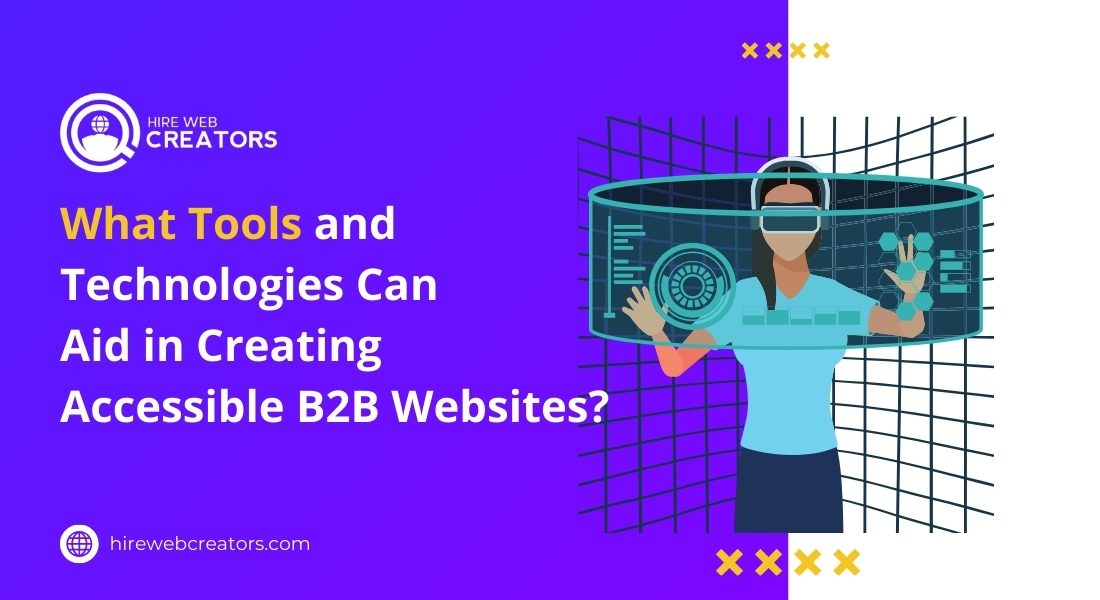
Accessibility evaluation tools, such as WAVE and Axe, help identify potential issues on your website and provide recommendations for improvement. These tools can analyze your site’s content and structure, highlighting areas that need adjustment to meet accessibility guidelines. In addition to evaluation tools, development technologies such as ARIA (Accessible Rich Internet Applications) roles and properties can enhance the accessibility of dynamic content and interactive elements. Implementing ARIA attributes helps ensure that users with assistive technologies can access and interact with all features of your site.
Leveraging these tools and technologies is crucial for maintaining an accessible web design for B2B websites. Regular use of evaluation tools and incorporating development technologies into your design process can help create a more inclusive online environment. By utilizing these resources, businesses can improve accessibility, meet compliance requirements, and enhance the overall user experience for all visitors.
How Can You Conduct an Accessibility Audit for Your B2B Website?
Conducting an accessibility audit for your B2B website is a critical step in ensuring that your site meets accessibility standards and provides an inclusive user experience. An accessibility audit involves evaluating your website’s design, content, and functionality to identify and address potential accessibility issues.
Start by using automated accessibility testing tools to scan your website for common issues. These tools can provide a preliminary assessment and highlight areas that require attention. However, automated tools alone are not sufficient, as they may not catch all accessibility problems. Complement the automated testing with manual reviews and user testing involving individuals with disabilities. This comprehensive approach helps identify issues that may not be detected by automated tools and provides insights into real-world accessibility challenges.
Implementing findings from the audit involves making necessary adjustments to your website’s design and functionality. This includes addressing issues related to color contrast, keyboard navigation, and alternative text for images. Regularly conducting accessibility audits and making ongoing improvements ensures that your B2B website remains compliant with accessibility standards and continues to provide a positive user experience for all visitors.
What Role Do Color and Contrast Play in Accessibility?
Color and contrast are fundamental elements of accessible web design for B2B websites, playing a crucial role in ensuring that content is readable and navigable for all users. Proper color contrast enhances the visibility of text and other important elements, making it easier for users with visual impairments to access and engage with your content.
Ensuring adequate color contrast involves selecting text and background colors that meet accessibility standards. The Web Content Accessibility Guidelines (WCAG) specify minimum contrast ratios to ensure readability for users with low vision or color blindness. For example, maintaining a high contrast ratio between text and background colors improves readability and reduces eye strain. Additionally, using color alone to convey information can be problematic for users with color vision deficiencies, so it is important to incorporate text labels or patterns to provide additional context.
By prioritizing color and contrast in accessible web design for B2B websites, you enhance usability and ensure that all users can effectively interact with your content. Implementing these practices not only improves compliance with accessibility standards but also contributes to a more inclusive and user-friendly online experience.
How Can You Make Forms and Interactive Elements Accessible?
Making forms and interactive elements accessible is essential for creating an inclusive user experience on B2B websites. Accessible web design involves ensuring that all interactive features, such as forms, buttons, and links, are usable by individuals with disabilities.
Start by implementing clear and descriptive labels for form fields to ensure that users with screen readers can understand the purpose of each field. Providing instructions and error messages in a format that is easily accessible helps users complete forms accurately. For interactive elements such as buttons and links, ensure that they are keyboard navigable and have sufficient visual indicators to indicate their functionality. Additionally, using ARIA (Accessible Rich Internet Applications) attributes can enhance the accessibility of dynamic content and interactive features by providing additional context for assistive technologies.
Ensuring that forms and interactive elements are accessible in your B2B website design improves usability and helps meet accessibility standards. By incorporating these practices, you create a more inclusive environment that supports all users, including those with disabilities, and enhances overall user satisfaction.
What Are the Best Practices for Accessible Navigation on B2B Websites?
Best practices for accessible navigation on B2B websites are essential for ensuring that all users can easily find and interact with your site’s content. Effective navigation is crucial for creating a user-friendly experience and supporting accessibility goals.
Implementing clear and consistent navigation structures helps users understand how to move through your site. This includes using descriptive link text and providing a logical hierarchy for menus and submenus. Ensuring that navigation elements are keyboard accessible allows users who rely on keyboards or assistive technologies to easily navigate through your site. Providing visual cues, such as focus indicators, helps users identify which elements are currently active or selected.
By following best practices for accessible navigation in your B2B website design, you create a more intuitive and inclusive experience for all users. These practices not only enhance usability but also contribute to meeting accessibility standards and improving overall site performance.
How Can You Incorporate Accessibility into Your Web Design Process?
Incorporating accessibility into your web design process is essential for creating B2B websites that are inclusive and user-friendly. Accessibility should be considered from the outset of the design and development process to ensure that all aspects of your site are compliant with accessibility standards.
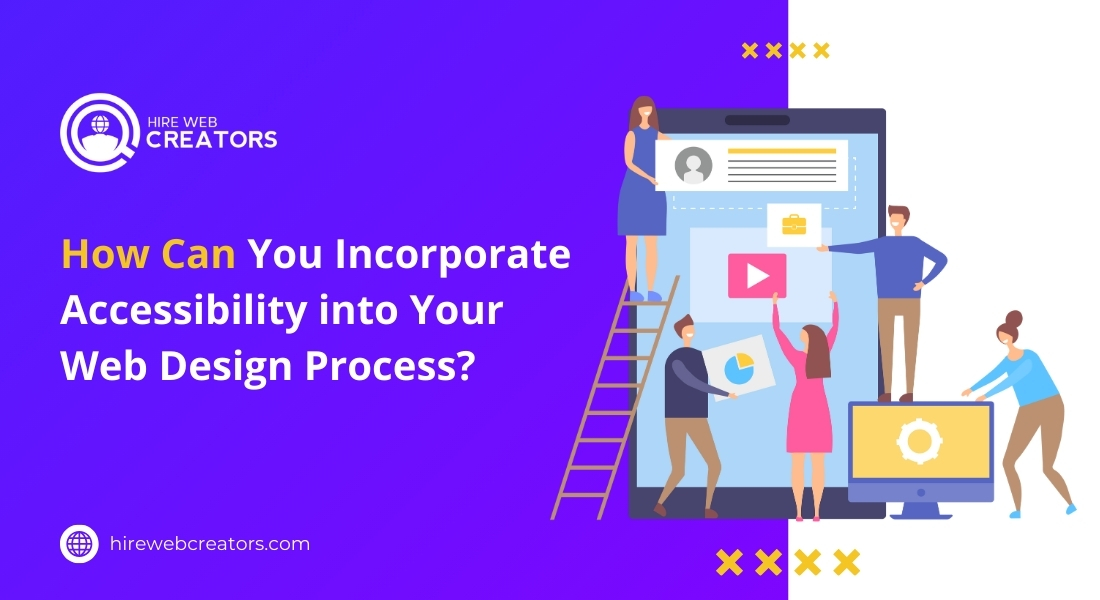
Start by integrating accessibility considerations into your design planning and strategy. This includes selecting accessible design patterns, ensuring that color and contrast meet standards, and planning for keyboard navigability. During the development phase, use coding practices that support accessibility, such as semantic HTML and ARIA attributes, to enhance the usability of interactive elements. Regularly testing your site with various assistive technologies and user feedback helps identify and address accessibility issues before launch.
By incorporating accessibility into your web design process, you create a more inclusive digital environment for all users. This proactive approach helps ensure that your B2B website meets legal requirements, improves user experience, and supports effective business operations.
What Are the Benefits of Investing in Accessible Web Design for B2B?
Investing in accessible web design for B2B websites offers numerous benefits that extend beyond mere compliance with accessibility standards. Accessible design enhances user experience, expands market reach, and strengthens your company’s reputation.
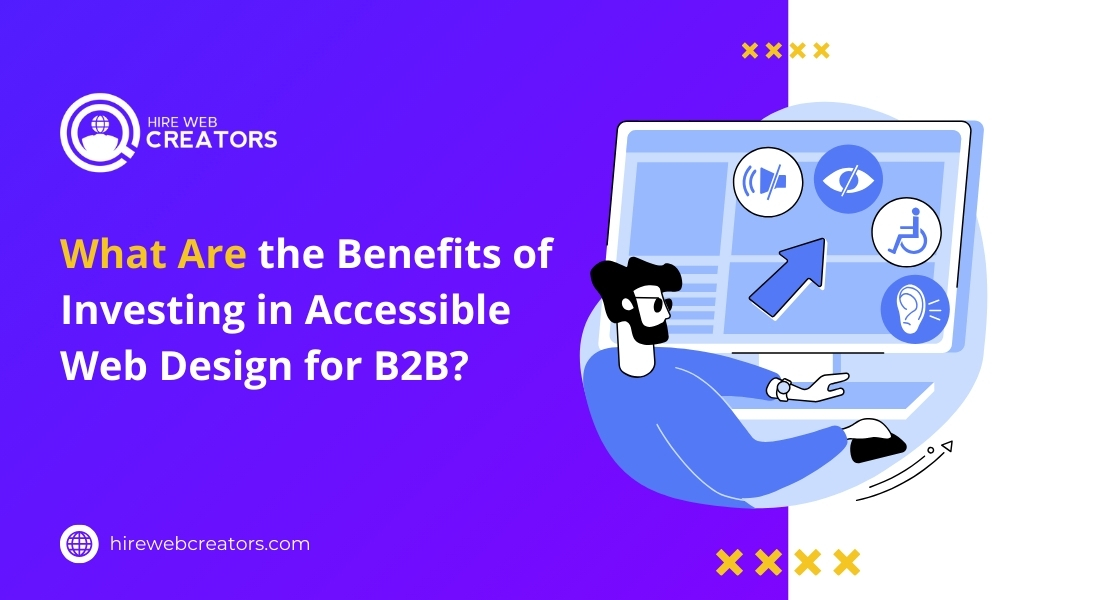
One significant benefit is improved user experience. Accessible web design ensures that all users, including those with disabilities, can easily navigate and interact with your site. This leads to increased user satisfaction and engagement, which can positively impact business outcomes. Additionally, accessible design can help expand your market reach by making your site usable for a broader audience, including individuals with diverse abilities.
Investing in accessible web design also demonstrates a commitment to inclusivity and corporate responsibility. This can enhance your company’s reputation and differentiate your brand in a competitive market. By prioritizing accessibility, B2B businesses can foster positive relationships with clients and partners, build a more inclusive digital presence, and contribute to a more equitable online environment.
How Can You Educate Your Team About Accessibility?
Educating your team about accessibility is vital for creating an inclusive web design environment and ensuring that accessibility standards are consistently applied. Accessible web design for B2B websites begins with a well-informed team that understands the principles and practices required to meet accessibility goals. Effective education strategies help embed these principles into your organization’s culture and workflow.
Start by providing comprehensive training on accessibility principles and best practices. This includes workshops and seminars focused on the Web Content Accessibility Guidelines (WCAG) and practical techniques for implementing accessible design. Training sessions should cover key topics such as color contrast, keyboard navigation, and alternative text for images. Utilizing online courses, certifications, and industry webinars can also enhance your team’s knowledge and skills. Ensuring that your team is up-to-date with the latest accessibility trends and tools will improve their ability to create compliant B2B websites.
Incorporate accessibility into your team’s daily workflow by making it a part of your design and development process. Create accessible design checklists and guidelines that your team can reference regularly. Encourage regular accessibility audits and reviews of your website to identify areas for improvement. Foster a culture of inclusivity by promoting open discussions about accessibility challenges and solutions within your team. By integrating these practices into your team’s routine, you ensure that accessibility remains a priority throughout the project lifecycle.
Empowering your team with the knowledge and tools to implement accessible web design practices is essential for creating B2B websites that are both compliant and user-friendly. Regular training, practical resources, and a culture of inclusivity will help your team effectively address accessibility challenges and deliver exceptional digital experiences for all users.
In conclusion, creating accessible web design for B2B websites is not just a matter of compliance but a strategic advantage that enhances user experience and broadens market reach. By integrating key principles of accessibility, businesses can ensure that their digital platforms are inclusive and usable for all individuals, including those with disabilities. This approach not only meets regulatory requirements but also demonstrates a commitment to inclusivity, which can significantly impact client satisfaction and business relationships.
Investing in accessible web design ultimately leads to a more effective and engaging online presence. By addressing common accessibility issues, leveraging relevant tools and technologies, and incorporating best practices, B2B websites can provide a seamless and positive user experience. Prioritizing accessibility not only benefits users but also contributes to a company’s reputation and success in a competitive market. Embracing these practices ensures that your website remains relevant, inclusive, and capable of serving a diverse audience effectively.
